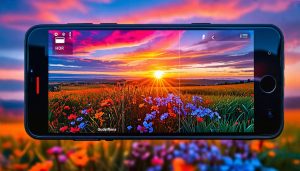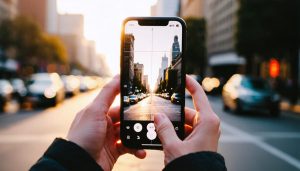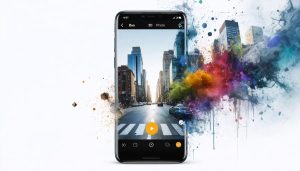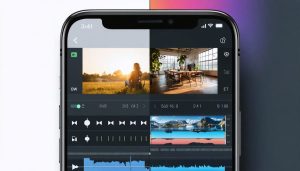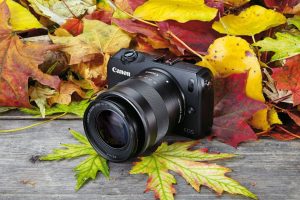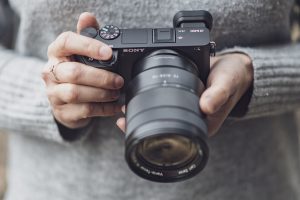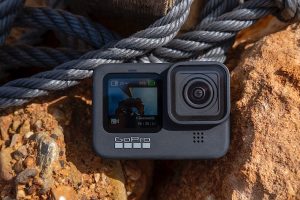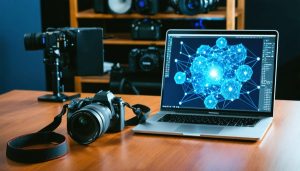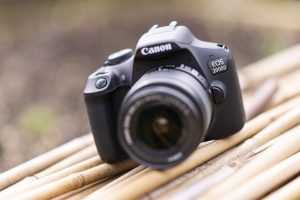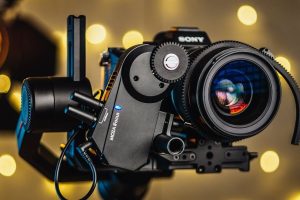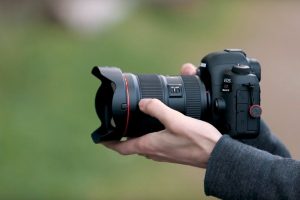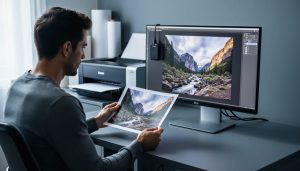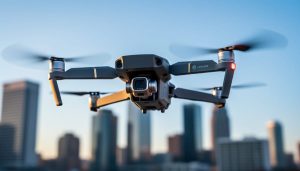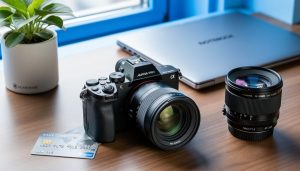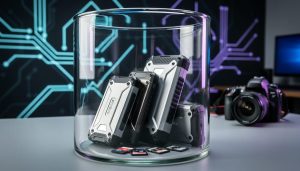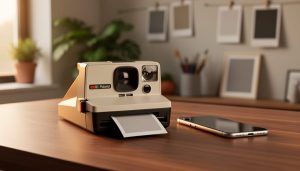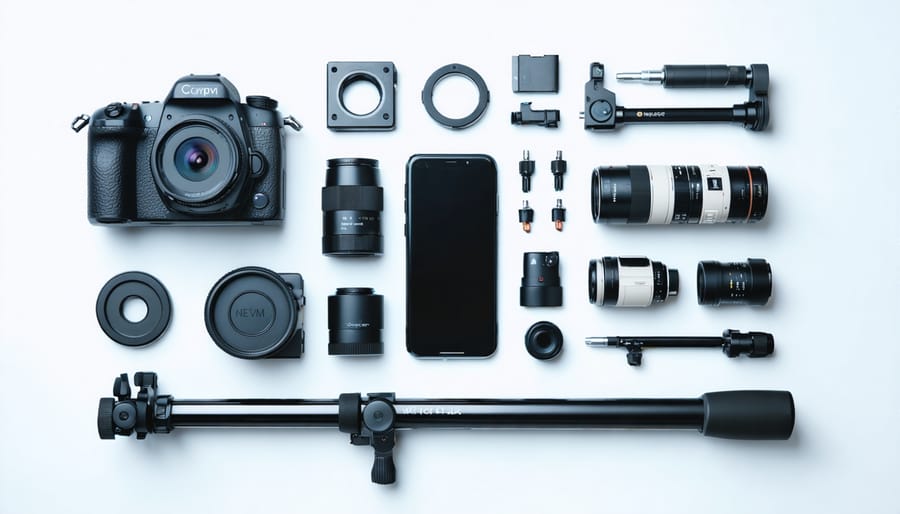
Transform your smartphone into a professional-grade camera with the right accessories. Beyond mastering essential smartphone photography secrets, specialized gear elevates mobile photography from casual snapshots to portfolio-worthy images. Today’s mobile accessories rival traditional camera equipment, offering stabilization systems that eliminate shake, professional-grade lenses that capture stunning macro and wide-angle shots, and lighting solutions that turn any location into a studio.
Whether you’re documenting life’s precious moments or creating content for social media, smartphone photography accessories bridge the gap between convenience and professional quality. From compact tripods that fit in your pocket to advanced lens systems that attach in seconds, these tools expand your creative possibilities without weighing you down. The latest generation of accessories works seamlessly with both iOS and Android devices, making professional-level photography more accessible than ever.
This guide cuts through the noise to focus on truly essential accessories that deliver tangible improvements to your mobile photography. We’ll explore options for every budget and skill level, helping you build a versatile kit that enhances your creative vision.
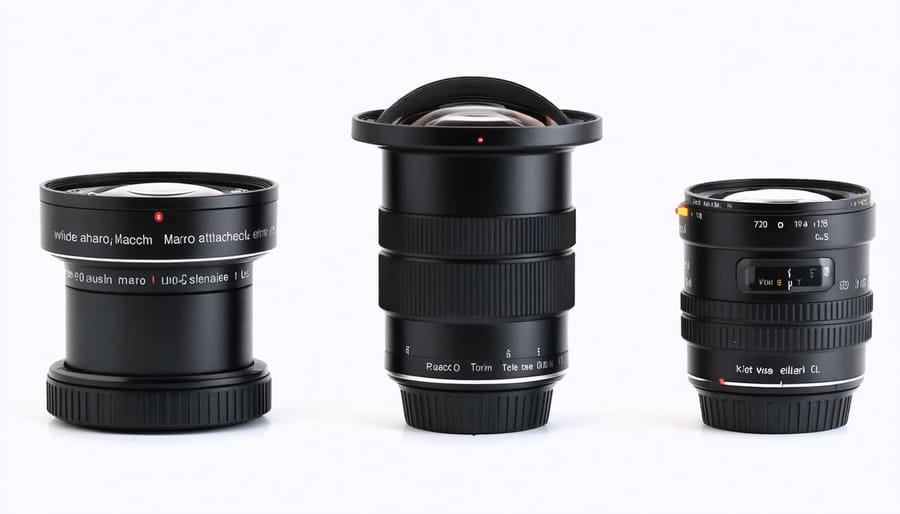
Essential Lens Attachments
Wide-Angle and Macro Lenses
Wide-angle and macro lenses are game-changing additions to your smartphone photography kit, each offering unique creative possibilities that extend beyond your phone’s built-in capabilities. Wide-angle attachments expand your field of view significantly, making them perfect for landscape photography, architecture shots, and group photos where space is limited. The best wide-angle lenses can capture up to 120 degrees of view without significant distortion at the edges.
For those fascinated by the miniature world, macro lenses open up an entirely new realm of photography. These attachments allow you to get extremely close to your subject, revealing intricate details in flowers, insects, textures, and other tiny subjects that would be impossible to capture with your phone’s standard lens. Quality macro lenses can achieve magnification ratios of up to 10x, turning ordinary objects into extraordinary photographic subjects.
When choosing these lenses, look for models with multi-element glass construction rather than simple plastic optics. Premium options from manufacturers like Moment, ShiftCam, and Olloclip typically offer superior image quality and better edge sharpness. Many now feature bayonet or magnetic mounting systems, making them quick and easy to attach and remove.
Remember that while these lenses can dramatically enhance your creative possibilities, they do have limitations. Wide-angle attachments may introduce some barrel distortion, particularly in architectural shots, while macro lenses often have a very shallow depth of field that requires steady hands and practice to master. For best results, use a tripod or stabilizer when shooting with these attachments, especially for macro photography where even slight movements can affect focus.
Telephoto Lens Solutions
Telephoto lenses for smartphones have revolutionized mobile photography, allowing you to capture distant subjects with remarkable clarity and detail. These attachments effectively increase your phone’s focal length, bringing you closer to the action without relying on digital zoom, which often degrades image quality.
Most smartphone telephoto lenses offer magnification ranges from 2x to 12x, with professional-grade options reaching up to 20x optical zoom. Popular manufacturers like Moment and Sirui produce high-quality glass lenses that maintain image sharpness while minimizing chromatic aberration and distortion.
When choosing a telephoto lens, consider the mounting system carefully. Universal clip-on options provide flexibility across different phone models but may not align perfectly with your camera. In contrast, phone-specific cases with threaded mounts offer better stability and precise alignment, though they’re less versatile when upgrading your device.
The practical applications for smartphone telephoto lenses are diverse. Wildlife photographers can capture intimate shots of animals without disturbing them, while sports enthusiasts can zoom in on the action from the sidelines. These lenses also excel in portrait photography, creating beautiful background compression that makes your subject stand out.
For optimal results, always use a stabilization solution when shooting with telephoto lenses. Even slight hand movements become magnified at longer focal lengths, potentially resulting in blurry images. A compact tripod or gimbal can make a significant difference in image quality.
Remember that lighting becomes increasingly crucial with telephoto shots. Since these lenses typically have smaller maximum apertures, you’ll want to shoot in well-lit conditions or adjust your exposure settings accordingly to maintain image quality.
Stabilization Tools
Gimbals and Stabilizers
Gimbals and stabilizers have revolutionized smartphone photography by eliminating the shakiness that often plagues handheld shots. These devices use sophisticated motors and sensors to keep your phone steady, resulting in smoother videos and sharper photos, even in challenging conditions.
The DJI OM 5 leads the market with its compact design and innovative features. Its magnetic phone attachment system makes mounting quick and easy, while the built-in extension rod offers creative angles for selfies and high-angle shots. The companion app provides intelligent tracking and automated shooting modes that are perfect for content creators.
Zhiyun’s Smooth 5 offers excellent value with its robust build quality and professional-grade stabilization. It particularly shines in low-light situations, thanks to its fill light feature. The intuitive control wheel makes manual focus and zoom adjustments feel natural, though it may take some time to master all its functions.
For beginners, the Hohem iSteady Mobile Plus provides a more straightforward experience with essential stabilization features at a budget-friendly price point. While it may lack some advanced features, it delivers reliable performance for basic photo and video needs.
Battery life typically ranges from 12-15 hours across most models, though intensive use of features like active tracking will drain power more quickly. Consider carrying a power bank for extended shooting sessions.
When choosing a gimbal, consider your specific needs: portability, battery life, ease of use, and compatibility with your smartphone model and case.
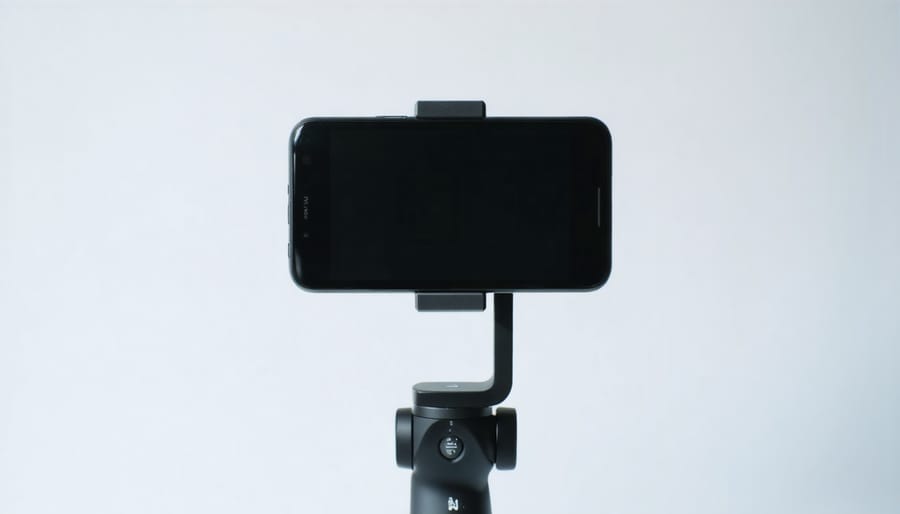
Tripods and Mounts
A stable platform is essential for capturing sharp, professional-looking smartphone photos, and modern tripod solutions offer incredible versatility for every shooting scenario. From compact tabletop options to full-sized professional tripods, there’s a mount for every situation.
For everyday carry, pocket-sized tripods like the GorillaPod series offer impressive flexibility with their bendable legs that can wrap around poles, tree branches, or conform to uneven surfaces. These compact options are perfect for travel photography or impromptu shooting sessions.
Traditional telescoping tripods have also evolved to accommodate smartphones, with specialized phone mounts replacing traditional camera plates. Look for models with Bluetooth-enabled remote shutters, which let you trigger shots without touching your device – essential for long exposures and self-portraits.
For vloggers and content creators, mini tripods with extendable center columns double as selfie sticks, providing stability for both stationary and handheld shooting. Many feature built-in level indicators and 360-degree rotation capabilities for panoramic shots and smooth panning videos.
Magnetic mounts represent an innovative solution for urban photography, allowing secure attachment to metal surfaces like street signs or car hoods. Just ensure your mount has strong neodymium magnets and rubber padding to protect your device.
For studio work, consider investing in a heavy-duty tripod with a professional smartphone mount that offers precise adjustments and portrait-to-landscape orientation switching. These setups might seem excessive, but they’re invaluable for product photography or low-light situations requiring absolute stability.
Lighting Equipment
LED Panels and Ring Lights
Proper lighting can transform an ordinary smartphone photo into a stunning professional-looking image, and LED panels and ring lights are game-changers in this department. These portable lighting solutions give you precise control over your lighting conditions, whether you’re shooting portraits, product photos, or creating content for social media.
Ring lights have become particularly popular due to their ability to create even, flattering illumination and the characteristic circular catchlight in subjects’ eyes. Many models now come with adjustable color temperature settings, allowing you to match the ambient lighting or create specific moods. For vloggers and content creators, compact ring lights that clip directly onto your smartphone are especially convenient for achieving that professional look during video calls or live streaming.
LED panels offer more versatility in lighting placement and coverage area. These rectangular light sources can be positioned at various angles to create dramatic shadows or eliminate them entirely. Many modern LED panels feature adjustable brightness levels and color temperatures, some even offering RGB effects for creative lighting scenarios. Look for models with built-in diffusers to soften the light and reduce harsh shadows.
When choosing between the two, consider your primary photography style. Ring lights excel at close-up portraits and beauty shots, while LED panels are more versatile for general photography and video work. For maximum flexibility, many photographers keep both in their kit.
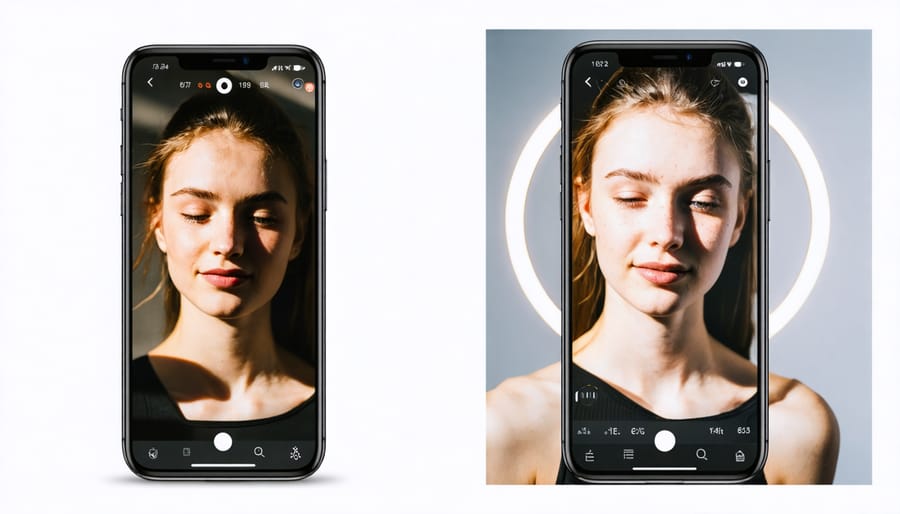
Flash Units and Diffusers
While smartphone cameras have improved significantly in low-light performance, external flash units and diffusers can take your mobile photography to the next level. These accessories provide precise control over lighting conditions, helping you achieve professional-looking results in challenging situations.
Compact LED flash units designed specifically for smartphones offer adjustable brightness levels and color temperature controls. These portable lights typically connect via Bluetooth or plug directly into your phone’s charging port, allowing seamless integration with your camera app. Some models feature multiple light panels that can be positioned independently, giving you creative control over shadow and highlight placement.
Diffusers are essential companions to flash units, helping to soften harsh light and create more flattering illumination. Popular options include clip-on softboxes, mini bounce cards, and silicone diffuser domes. These accessories distribute light more evenly across your subject, reducing unwanted shadows and creating a more natural look.
For macro photography and close-up shots, ring lights have become increasingly popular. These circular LED arrays provide even illumination around your lens, eliminating shadows and ensuring consistent lighting for detailed shots. Many ring lights now come with adjustable color temperatures and brightness settings, perfect for both photography and video applications.
When selecting a flash unit or diffuser, consider portability and compatibility with your specific smartphone model. Look for options that offer rechargeable batteries and sturdy construction for reliability during extended shooting sessions.
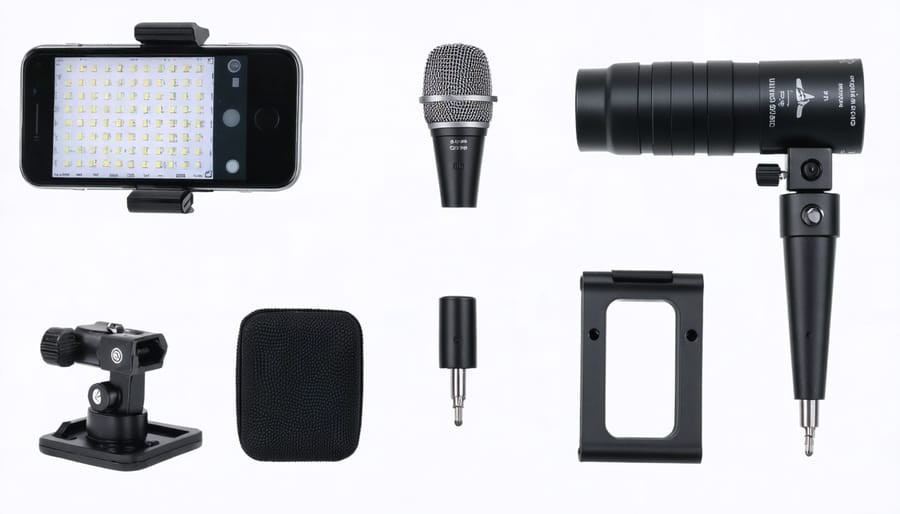
Advanced Accessories
Remote Triggers and Controllers
Remote triggers and controllers have revolutionized smartphone photography, especially for those moments when pressing the shutter button isn’t practical or possible. Whether you’re capturing group shots, long exposures, or seeking to eliminate camera shake, these accessories are invaluable tools in your photography kit.
Bluetooth remotes are the most common type, offering wireless control from up to 30 feet away. These compact devices typically pair easily with both Android and iOS devices, featuring simple one-button operation for shutter release. Some advanced models include additional controls for zoom and video recording, making them versatile tools for various shooting scenarios.
For self-portraits and vlogging, many remote triggers come with built-in phone stands or tripod mounts, allowing you to set up your shot and then step into frame with confidence. Premium options often include timer functions, interval shooting capabilities, and even voice activation features, giving you more creative control over your photography.
Wired triggers, while less common, can be more reliable in crowded environments where Bluetooth signals might be interference-prone. These connect directly to your phone’s charging port and often double as camera grips for added stability.
When choosing a remote trigger, consider compatibility with your specific phone model and preferred photography apps. Look for options with long battery life and durability, especially if you plan to use them outdoors or while traveling.
Microphones and Audio Gear
While smartphone cameras have made incredible strides in video quality, audio often remains a weak point. Fortunately, there’s a wide range of audio gear that can help transform your mobile device into a professional video camera setup.
Lavalier microphones are an excellent starting point, offering clear, directional audio for vlogs and interviews. These small clip-on mics can connect directly to your smartphone’s audio jack or lightning port, providing significantly better sound quality than your phone’s built-in microphone. Popular options like the Rode SmartLav+ or PowerDeWise Pro deliver professional-grade audio at reasonable prices.
For more versatile recording scenarios, consider a shotgun microphone. These directional mics excel at capturing audio from specific sources while minimizing background noise. The Rode VideoMic Me-L and Shure MV88+ are standout choices that mount directly to your smartphone.
Don’t overlook the importance of wind protection. Even light breeze can create distracting noise in your recordings. Most external microphones come with basic foam windscreens, but investing in a dedicated deadcat windshield is worth considering for outdoor shooting.
For podcasters and indoor content creators, USB condenser microphones that connect to your smartphone can provide studio-quality sound. Many also include monitoring capabilities through headphone outputs, allowing you to check audio levels in real-time.
Storage and Battery Solutions
When you’re out capturing moments with your smartphone, the last thing you want is to run out of storage or battery power. Fortunately, there are several excellent solutions to keep you shooting longer.
For storage concerns, portable SSDs have become increasingly popular among mobile photographers. These compact devices can connect directly to your smartphone via USB-C or Lightning ports, offering instant backup options and additional space for your RAW files and high-resolution images. Look for models with at least 500GB capacity to ensure ample space for extended shooting sessions.
Power banks are essential companions for serious smartphone photographers. Modern high-capacity options (20,000mAh or higher) can recharge your device multiple times, and many support fast charging protocols. Some even feature wireless charging capabilities, eliminating the need for cables during quick top-ups between shots.
For those who frequently shoot in remote locations, consider investing in a battery case. While bulkier than standard cases, these accessories provide continuous power without the need to connect external devices. Many offer protection against drops and weather while doubling your phone’s battery life.
Smart management of your storage and power resources is crucial. Consider using cloud storage solutions when Wi-Fi is available, and always carry a compact power bank as backup. Some photographers even opt for solar charging solutions during extended outdoor shoots, ensuring they never miss that perfect moment due to dead batteries.
Getting the Most from Your Accessories
To maximize the potential of your smartphone photography accessories, start by mastering your device’s essential camera features before incorporating add-ons. This foundation will help you better understand when and how to use each accessory effectively.
When using external lenses, always clean both the smartphone camera and attachment lens thoroughly before mounting. Keep a microfiber cloth handy to remove fingerprints and dust, which can significantly impact image quality. For macro lenses, maintain a consistent distance from your subject and use a stabilizer to prevent camera shake at close ranges.
Gimbals require proper balancing for optimal performance. Take time to adjust the counterweights and calibrate the motors before each shooting session. Start with slower movements and gradually build up to more dynamic shots as you become comfortable with the controls. Remember to charge both your phone and gimbal fully before extended shoots.
Lighting accessories are most effective when used strategically. Position LED panels at a 45-degree angle to your subject for flattering illumination, and experiment with different distances to control intensity. For ring lights, position your phone camera through the center for even lighting in portrait photography.
With tripods, invest time in learning quick-release mechanisms and ensure all locking mechanisms are secure before shooting. When using remote triggers, pair them well in advance and keep spare batteries handy. For time-lapses or long exposures, enable airplane mode to prevent interruptions from notifications.
Store your accessories in a dedicated case with silica gel packets to protect against moisture, and regularly check for loose components or wear. By treating your gear with care and practicing these techniques consistently, you’ll achieve professional-quality results from your smartphone photography setup.
Smartphone photography accessories have revolutionized the way we capture moments with our mobile devices. From versatile lens attachments that expand creative possibilities to stabilization tools that ensure crisp, professional-looking shots, these accessories have bridged the gap between smartphone and professional photography. As we’ve explored, investing in quality lighting solutions, reliable tripods, and protective gear can significantly enhance your mobile photography experience.
When starting your journey in mastering phone photography, consider beginning with essential accessories like a basic tripod and a versatile lens kit. As your skills develop, gradually expand your collection based on your specific photography needs and interests. Remember that while accessories can enhance your capabilities, they’re tools to support your creative vision – not replacements for developing solid photography fundamentals.
The key is to choose accessories that align with your photography style and goals. Whether you’re an aspiring content creator, a travel enthusiast, or simply someone who loves capturing life’s precious moments, the right combination of accessories can help elevate your smartphone photography to new heights. Focus on quality over quantity, and always test new gear thoroughly to ensure it meets your expectations and workflow needs.


